As many of us look forward to the final of the Eurovision Song Contest this weekend, it is perhaps a good time to look back at a counter-event promoted by left-wing groups in Brussels in 1979, and in particular at its most significant contribution.
Counter Eurovision 79, though now largely forgotten, nevertheless left its mark in the form of a classic roots reggae album.
The event was organised as an alternative to the arguably cheesy and conservative pop of the established Eurovision of that era – a 'bread and circuses’ extravaganza in the eyes of many on the left.
The aim of the Counter Eurovision was to stage a musical show with more street cred, progressive music linked organically to marginalised groups relatively big in numbers but small in political influence.
The event in Brussels may also have contained an element of protest against the staging of the Eurovision proper in the divided city of Jerusalem that same weekend.
No doubt it was also simply an opportunity to have a good time among the like-minded.
There is little enough information available now about Counter Eurovision 79 which was organised by the workers' representative association CAFIT (Collectif d'Animation pour la Formation et l'Information des Travailleurs) and the activist group Pour le Socialisme, and which took place at the Cirque Royal concert hall in Brussels on 31th March and 1th April 1979.
It didn't follow the same format as the Eurovision, as performers played a set rather than a single tune or song.
In fact, the event is most celebrated for the 40 minute set of seven songs played by English reggae band Misty, or Misty in Roots, which was made into the deep and heavy album Live at the Counter Eurovision 79.
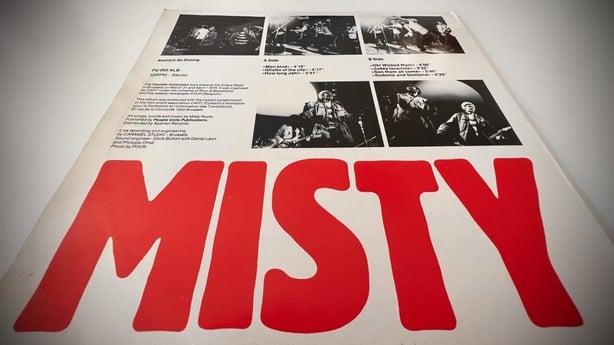
Misty in Roots were an Afro-Caribbean roots reggae collective whose members had origins in Jamaica, St Kitts and Grenada but most of whom grew up in Southall in west London.
Band members in 1979 included brothers Walford and Delvin Tyson, Chesley Samson, Delbert McKay, Tony Henry and Dennis Augustine.
The album was mixed at a studio in Brussels by local sound engineers, although roots reggae was more commonly produced by Jamaicans or those with some significant connection to Jamaica.
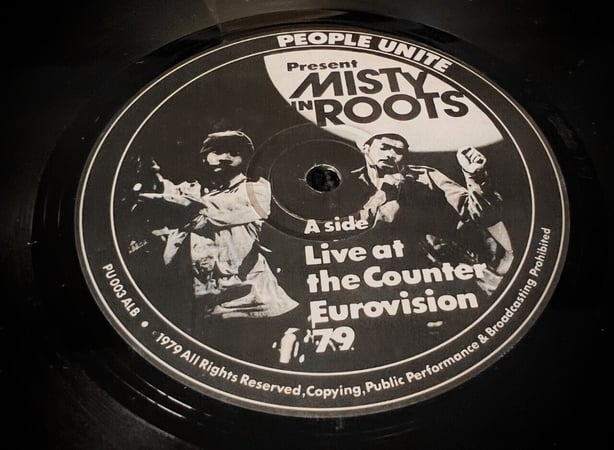
Following that three second crackle of anticipation that still excites devotees of vinyl, the album opens with a provocative declaration by Walford Tyson in the style of a charismatic preacher, both a clarion call and an indictment of the fearful and the inert:
"When we trod this land, we walk for one reason. The reason is to try to help another man to think for himself. The music of our heart is roots music; music which recalls history, because without the knowledge of your history you cannot determine your destiny. The music about the present, because if you are not conscious of the present, you're like a cabbage in this society; music which tells about the future and the judgement which is to come, the music of our heart is roots ... ".
In keeping with the spirit of the Counter Eurovision, the album was released on Misty in Roots' own People Unite label.
Not having the backing of a big record label could explain why it took more than a year to have an impact, but eventually the album was championed by John Peel on BBC Radio 1, available to us in Ireland at that time on a ropey MW signal and on a much clearer VHF/FM signal in the summer.
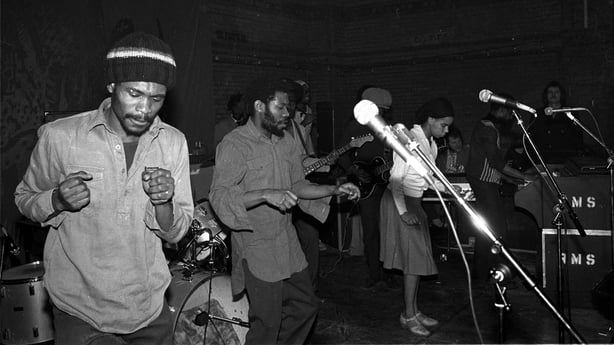
It wasn’t until November 1980 that the album was reviewed in the generally authoritative and influential Black Music and Jazz Review magazine.
Reviewer Chris May, perhaps overstating the case, claimed that Live at the Counter Eurovision 79 was "among the top three British reggae albums ever recorded".
Given the political nature of the Counter Eurovision and the corresponding political views of the reviewer himself, his enthusiasm may be explained in part as an act of solidarity with the marginalised group represented by Misty in Roots, rather than merely a question of his own personal taste.
Nor is it merely a question of the reviewer identifying with the marginalised for purely political reasons. His passionate appreciation of the album shows an awareness that groups low in socio-economic status may nonetheless possess assets and goods, such as reggae music, potentially high in cultural status.
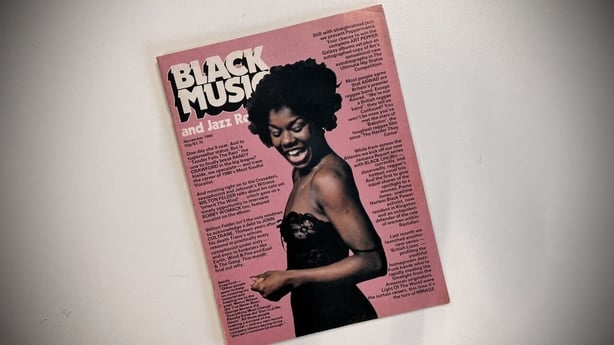
Live at the Counter Eurovision 79 is a contradictory mix of several seemingly incompatible socio-cultural influences.
Although the event itself was held in the name of Western European secular socialism, much of the lyrical content is based on the Old Testament fundamentalism taught in schools and churches in slave and post-slave societies in the Caribbean, itself of course also originating in Western Europe.

The album's loudest voice however is the mid-20th century re-interpretation of that same Old Testament fundamentalism by a small group of Jamaicans, which became known as Rastafarianism and which incorporated the earlier black zionism of the prominent Jamaican radical Marcus Garvey.
For all that, Rastafarianism has never had any political power in Jamaica beyond the symbolic, and some lip service, and its cultural power and influence have waxed and waned over the years.
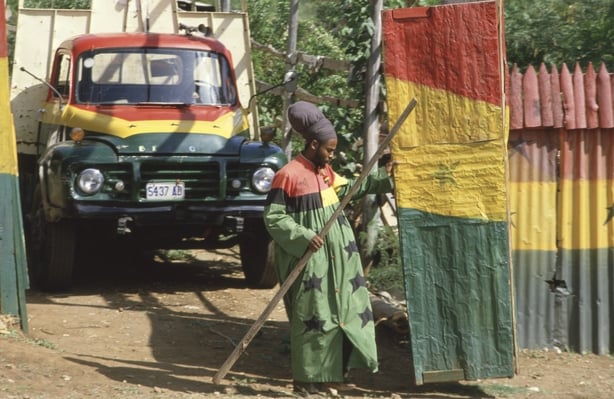
the head-dress and robe of the conservative sect known as Bobo Ashanti. (Getty Images)
In fact, Live at the Counter Eurovision 79 was out of tune and out of step with what was happening in 1979-80 in Jamaica – the mother country of reggae music and its lodestar when it came to shifts in form and style.
The roots rasta sound of the album was being replaced by dancehall reggae in Jamaica, and soon afterwards among the diaspora in England too.
Apart from innovations in bass lines and drum patterns, the lyrical content of the new dancehall reggae style contrasted sharply with what it was gradually replacing.
Dancehall lyrics – reprising earlier folk traditions – tended to be crowd pleasers, not just of the boy meets girl type, but also contained stories of the here and now recounting local news and gossip, neighbourhood-specific humour, thinly disguised satire, extemporary nonsense rhymes and plenty of ribaldry, known as 'slackness'.
By 1980, young dancehall artists such as Barrington Levy and the slack General Echo were already established performers in Jamaica, confirming that the new style was no mere flash in the pan.
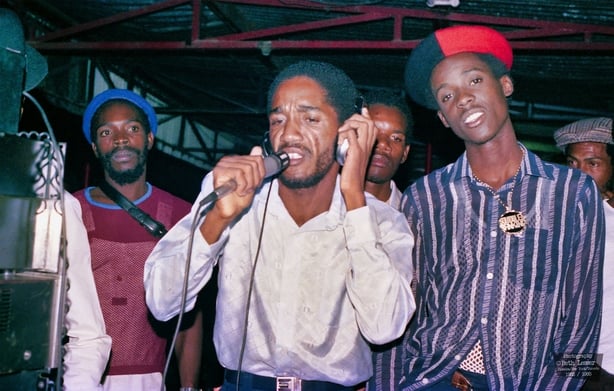
Live sound system stage shows by these vocalists, backed by records rather than musicians – a simpler and cheaper way of maximising reach – now became the norm.
Vocalists, as ever in reggae music, were of two types – singers who used a wide vocal range and those known as deejays whose narrower range placed them closer on the artistic spectrum to the folk poets and the storytellers of oral tradition, while at the same time being ultra-postmodern. Deejays generally had higher status and ruled the dancehall roost.
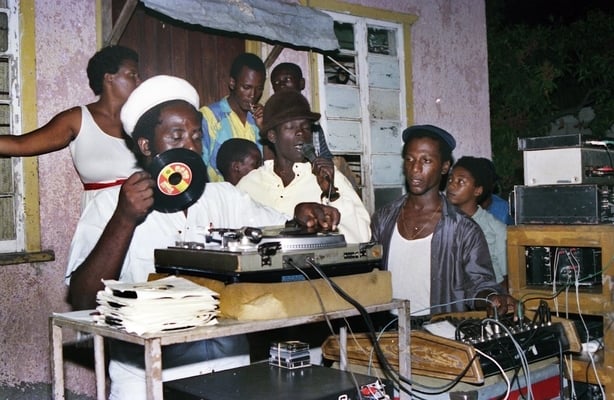
The song in this first video below could be regarded as an example of the transition from roots to dancehall. Delivered in sing-song patwa [patois] and in a chatty back-and-forth jocular style, it is clearly a metaphor for a person or persons of ill-repute – who exactly being known only to the local community.
It should be said – despite female participation in the above track – that dancehall was overwhelmingly male-dominated, often toxically so.
In this second video, as in the photos above, it is worth noting the near complete absence of rasta dreadlocks, no longer in fashion and occasionally frowned upon, in the new dancehall era.
Reggae music in England, however, remained more pensive and more reflective of social and political developments for longer than it did back in Jamaica.
Jamaicans were tired of the heavy roots, socially conscious lyrics and dark, spacious sound which were increasingly seen as didactic, pedantic and doom-laden, as indeed Misty’s album is and which could be seen as the apotheosis of the form.
This rejection and weariness of roots reggae could also be seen as a recognition of its inability to effect significant social change in Jamaica since its inception roughly at the beginning of the 1970s.
The fact was that roots reggae – originally the music of disadvantaged but ever-resourceful Jamaican urbanites – was now paradoxically at odds with the contemporary sensibilities of those same people.
Though economically and politically demeaned, the poor in Jamaica had always sought to survive on their own terms and even to empower themselves – in so far as they could and in a mostly positive way – by necessary participation in and close identification with the musical innovations and performances of their finest and most talented.
In this light, the transition to dancehall could be seen firstly as their rejection of roots reggae and its international appeal and secondly as a return to basics created by themselves for themselves.
Roots reggae had been – in the words of Jamaican sociologist Orlando Patterson – "the very antithesis of commodification, fetishization and standardization", but this was no longer guaranteed with the music going global and finding new audiences in places like Brussels.
Dancehall reggae also made more frequent use of the spoken language of Jamaica, even in the monikers adopted by the new generation of performers such as Ranking Toyan and Welton Irie.
Jamaican Creole, or patwa, though English-based, moves along a spectrum either towards or away from standard English and the greater use of the colloquial language in dancehall was another way of purposely distinguishing it from roots reggae.
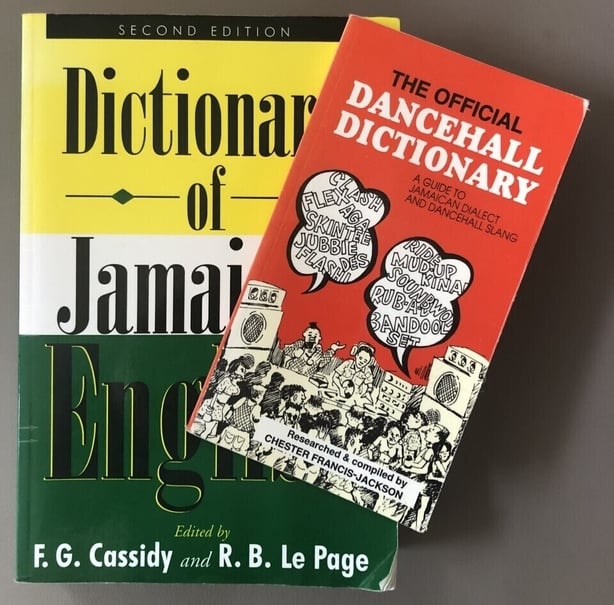
It should also be said that despite its undoubted social benefits, the culture and in particular the business of dancehall reggae weren't entirely wholesome.
In fact, the business could be a vehicle for politically sponsored area 'dons' and independent 'bandits', both of whom were at one and the same time patrons and predators of disadvantaged communities, responsible for doling out favours and loot and for uninhibited organised crime, including brutal gun violence.
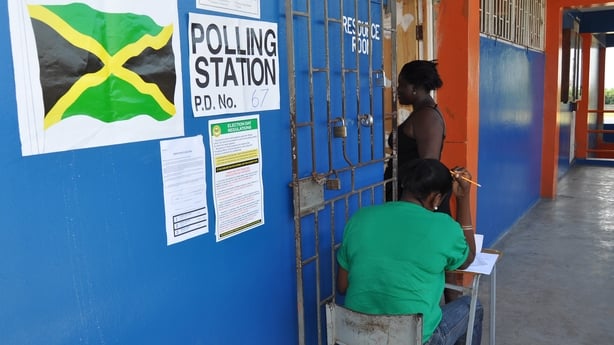
Gardens, Kingston, Jamaica, 2011. General election time in Jamaica sees
an increase in party political-linked sectarian violence. (Getty Images)
One of the possible reasons for reggae remaining rootsy and more politically conscious in England longer than in the mother country was the ongoing alienation of many Afro-Caribbean communities from the British state.
The late 1970s were a time when any spark of racial conflict was being fuelled by members and supporters of the notorious National Front who regularly took to the streets to express their anti-immigrant sentiments vulgarly and aggressively.
Counter-protests everywhere they went cramped their style however, but also often led to violent confrontation with the police.
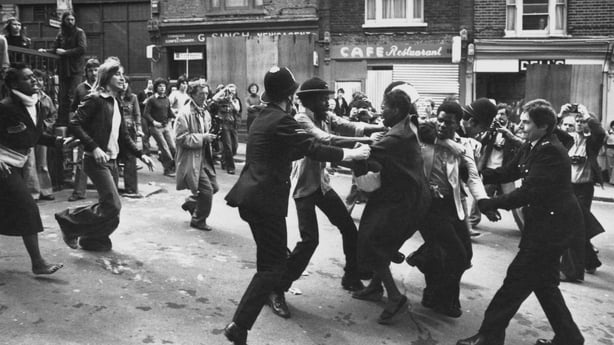
Indeed, high-profile traumatic events such as the killing of Blair Peach by police in Southall – Misty's home turf in London – less than a month after Counter Eurovision 79 confirmed and reinforced the estrangement of ethnic minorities from the system and institutions of power.
Blair Peach was taking part in a protest against a National Front St George's Day rally in Southall on the 23rd April 1979 when he was fatally struck by an illegally modified police baton.
The events surrounding his death are memorialised in no uncertain terms in the dub poem Reggae Fi Peach recorded the following year by Linton Kwesi Johnson.
The force of events raised Misty in Roots' profile in the months and years following the Counter Eurovision and the communal trauma of Southall, their relevance reiterated by fierce and sustained rioting in Brixton and Toxteth – and Southall again – in 1981.
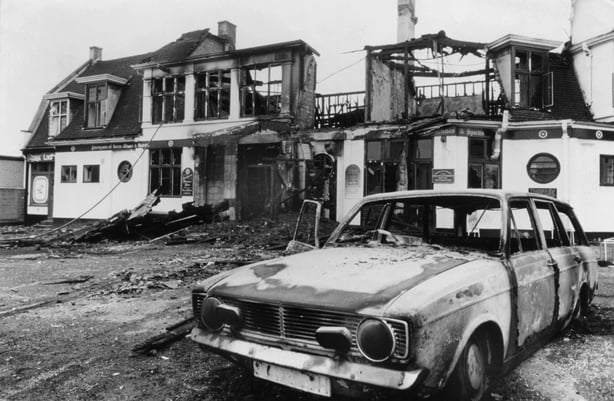
Throughout the upheaval, Misty in Roots continued to initiate and participate in anti-racism and awareness concerts and were seen as one of a number of reggae bands and performers who articulated defiantly the civil and legal requirements and demands of the Afro-Caribbean community and other minorities in Britain in the early 1980s.
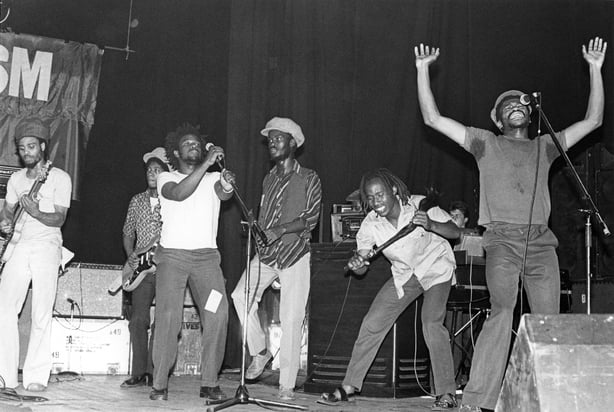
Just as in Jamaica, however, roots reggae was deposed by popular demand in the mid-1980s by dancehall reggae, and in particular by an original and hugely influential English form known at the time as 'fast style'.
Along with a rapid tempo, fast style was frequently strophic – or modified strophic – in form, ditching or truncating chorus and bridge in order to pack in torrents of lyrics and maintain audience attention.
As skilful as it was however, there was no place and no room in it for the radical or spiritual messages of its predecessor. A fine – if slightly raw – example of fast style is featured in the video below.
And so it was that Misty lost their musical salience and edge, were supplanted at the frontline of reggae music by a new crop and gradually faded into the background.
So, was there anything gained politically or socially from having had a Counter Eurovision and what was its value otherwise?
Events evident in other parts of Western Europe today may appear to echo the type of unrest in 1970s London and might lead us to believe that the nature of some political and social questions hasn't changed radically.
Of course, there have been very many substantial material advances since 1979, and many less conspicuous ones too such as individual and group rights previously unrecognised that are now almost integral to liberal society.
And yet perennial bloody conflict endures, environmental degradation pervades, extreme inequality remains inherent to the fixed order, linguistic and cultural diversity ebb away at a rate of knots and general institutional dysfunctionality continues to sustain itself if nothing else.
Perhaps it's more that we – like the zany Red Queen chess piece in Through the Looking-Glass – are constantly progressing just to stay still in the face of equally strong opposing forces mostly of our own creation. A kind of stalemate in motion, perpetually pushing and pulling, evolving and relapsing, both calmly and furiously in lockstep, and leaving any undercurrent of absolute progress – amid all the turbulence – difficult to appreciate.
But how could Counter Eurovision 79 have hoped to engage with such rhetorical convolutions of the global stage when the simplicity and directness of its own stage was all that was required in that particular moment?
Perhaps all we can say is that while events such as the Counter Eurovision may not have the power to effect the type of change wished for by the organisers in the time wished for, they can at least inspire and produce pretty good music.
What chance another one?
Ciarán Lenoach is an RTÉ journalist, and a devotee and collector of reggae music since the 1970s


